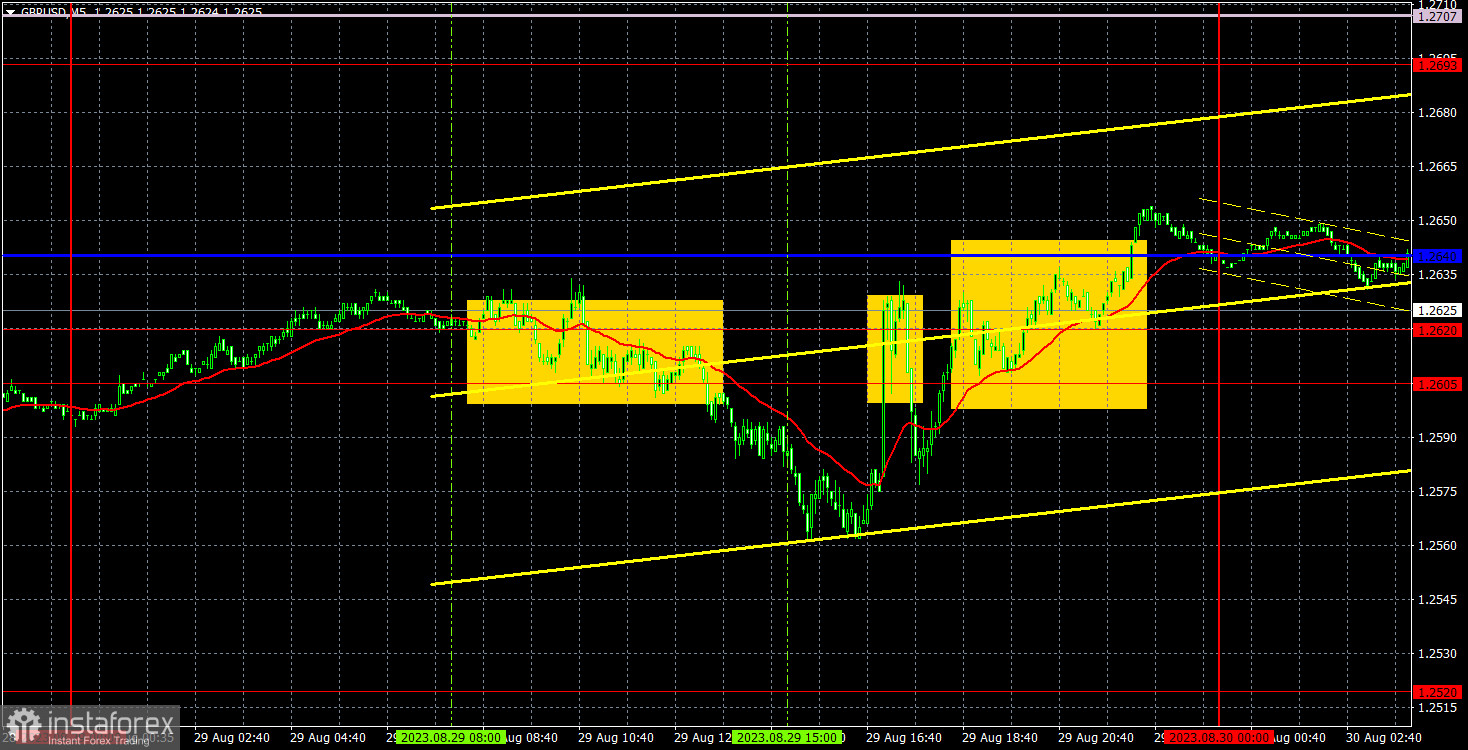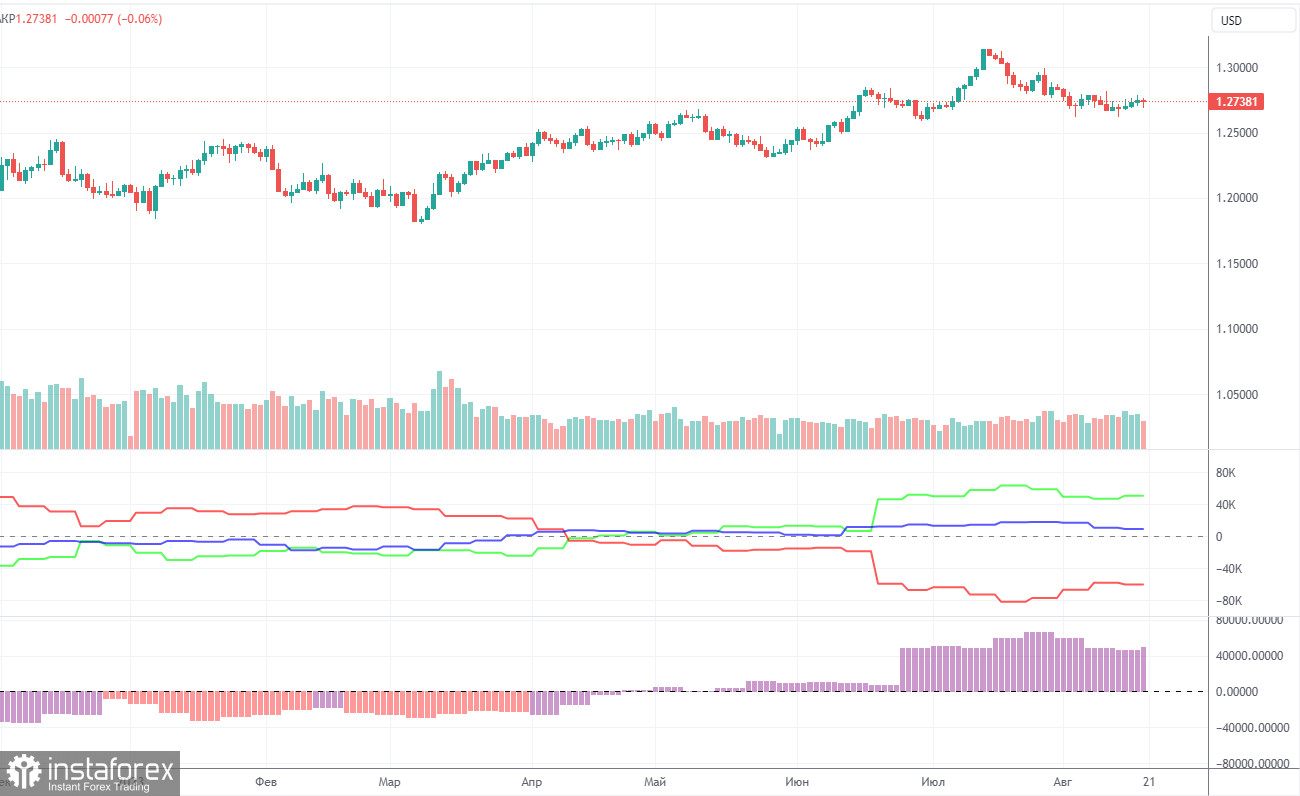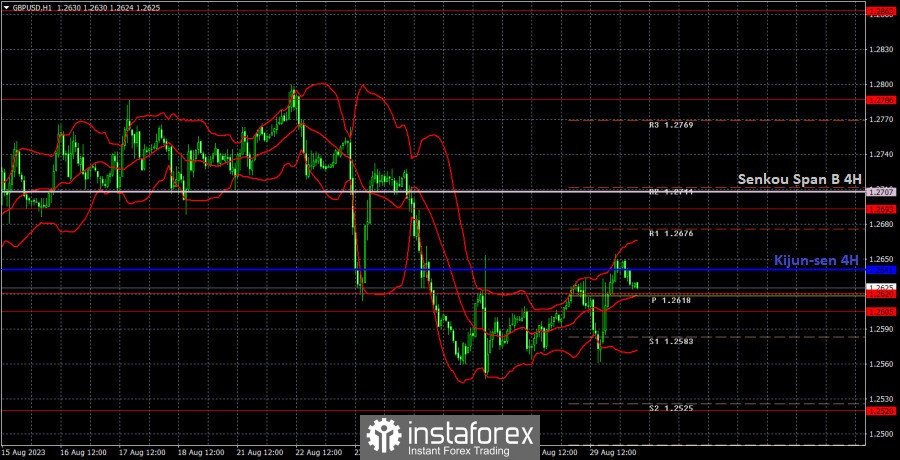Analysis of GBP/USD 5M

GBP/USD edged up on Tuesday. However, the movements were very chaotic throughout the day, making it quite challenging to trade. Moreover, during the US session, the Kijun-sen line dropped to 1.2640, forming a whole resistance area with levels at 1.2605 and 1.2620. It was extremely risky to open positions in this area. During the US session, the JOLTS report was released, which was quite important. And not only did the US dollar come under selling pressure, but we also witnessed several bearish pullbacks as things progressed. The first labor market and unemployment report fell through; the dollar can only hope that the subsequent ones will be better.
The first trading signal was rewarding. The price overcame the 1.2605-1.2620 area and managed to fall by about 30 pips. This was enough for at least setting a break-even Stop Loss order, at which the trade was closed. The second sell signal around the same area shouldn't have been executed, as the JOLTS report was clearly not in favor of the US currency. The third buy signal formed overnight, so it shouldn't have been executed as well.
COT report:

According to the latest report, the non-commercial group of traders opened 7,500 long positions and closed 600 short ones. Thus, the net position of non-commercial traders increased by 8,100 positions in a week. The net position has been steadily growing over the past 11 months as well as the pound sterling. Now, the net position has advanced markedly. This is why the pair will hardly maintain its bullish momentum. I believe that a long and protracted downward movement should begin. COT reports signal a slight growth of the British currency but it will not be able to rise in the long term. There are no drivers for opening new long positions. Slowly, sell signals are emerging on the 4-hour and 24-hour charts.
The British currency has already grown by a total of 2,800 pips, from its absolute lows reached last year, which is a significant increase. Without a downward correction, the continuation of the uptrend will be illogical. We are not against the uptrend; we just believe a solid correction is needed first. The market perceives the fundamental background one-sidedly, ignoring any data in favor of the dollar. The Non-commercial group of traders has a total of 98,000 long positions and 38,900 short ones. I remain skeptical about the long-term growth of the pound sterling, and the market has recently begun to pay attention to short positions.
Analysis of GBP/USD 1H

On the 1H chart, the pound/dollar pair has left the sideways channel. GBP/USD was trading in this channel for three weeks. The pair can fall further, which is what we're expecting. Currently, the macroeconomic and fundamental background is not that crucial for the mid-term movement, as the market has long since processed all the bullish factors for the pound. However, this week there will be a lot of important data, so the pound can still rise. But for now, the price is below the Senkou Span B and Kijun-sen lines, so it's too early to speak about a trend reversal.
On August 30, traders should pay attention to the following key levels: 1.2429-1.2445, 1.2520, 1.2605-1.2620, 1.2693, 1.2786, 1.2863, 1.2981-1.2987. The Senkou Span B (1.2707) and Kijun-sen (1.2641) lines can also be sources of signals, e.g. rebounds and breakout of these levels and lines. It is recommended to set the Stop Loss orders at the breakeven level when the price moves in the right direction by 20 pips. The lines of the Ichimoku indicator can move during the day, which should be taken into account when determining trading signals. There are support and resistance levels that can be used to lock in profits.
On Wednesday, there's nothing particularly noteworthy slated in the UK, while in the US, we're expecting two relatively important reports, which could trigger movement and increase volatility. ADP will show the change in the number of employees in the private sector, while GDP will reveal economic growth for the second quarter.
Description of the chart:
Support and resistance levels are thick red lines near which the trend may end. They do not provide trading signals;
The Kijun-sen and Senkou Span B lines are the lines of the Ichimoku indicator, plotted to the 1H timeframe from the 4H one. They provide trading signals;
Extreme levels are thin red lines from which the price bounced earlier. They provide trading signals;
Yellow lines are trend lines, trend channels, and any other technical patterns;
Indicator 1 on the COT charts is the net position size for each category of traders;
Indicator 2 on the COT charts is the net position size for the Non-commercial group.





















